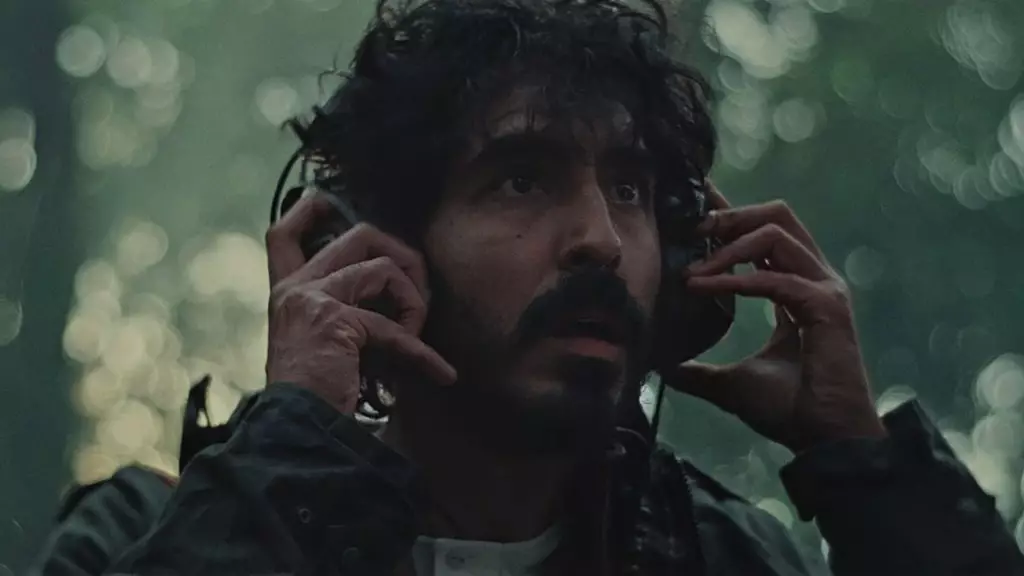Bryn Chaney’s debut feature film, “Rabbit Trap,” takes viewers on a contemplative journey into the realms of Celtic folklore intertwined with the profound silence and whispers of the natural world. Set against the backdrop of 1973, this haunting narrative revolves around the creative struggles of two musicians, Darcy and Daphne, played by the ever-talented Dev Patel and Rosy McEwen. Their retreat to a secluded cabin in the lush Welsh countryside serves as a canvas for a dark, emotional exploration that resonates deeply with contemporary audiences.
The film opens a conversation about the relationship between artistry and the mysterious forces that both inspire and haunt the creative process. Chaney cleverly juxtaposes the serene landscapes of Wales with the psychological turmoil faced by both artists. Their attempt to create their next album becomes not just a professional endeavor but a confrontation with deeper, often unspeakable fears.
One of the film’s most compelling aspects is its innovative use of sound. The narrative unfolds largely through an intricate sound design that elevates the cinematic experience. Rather than relying on dialogue alone, Chaney invites audiences to experience the hypnotic auditory landscape captured by Darcy—sounds that blur the line between reality and the ethereal. As viewers, we feel the haunting echoes of the forest, the chilling winds, and the crackling of leaves, all while Darcy’s voice floats through the air, suggesting that “sound is a ghost” that dwells within the body.
This auditory focus serves a dual purpose. On one level, it amplifies the couple’s creative energy, creating an atmosphere that invites inspiration while simultaneously awakening the latent darkness that each character grapples with. When Daphne becomes enamored by the mystical sounds, her creative spirit is elevated to exhilarating heights, showcased beautifully in a surreal sequence that feels as disorienting as an acid trip. It builds a bridge between their artistic collaboration and the chaotic emotional landscape that accompanies it.
The Tension of Unspoken Words
Throughout “Rabbit Trap,” sound stands in for that which remains unaddressed between the protagonists. As Darcy experiences the torment of sleep paralysis, we witness Daphne’s attempt to comprehend the shadows in his psyche through recordings of his sleep talk. There’s a poignant contrast here; while sound transcends the boundaries of spoken language, it also reveals the emotional void that exists between them. This tension showcases the fragility of their bond, as both characters strive to articulate feelings so deeply ingrained that they remain unvoiced.
The unearthing of buried traumas leads to exquisite performances from Patel and McEwen. As they navigate the murky waters of their relationship, the unspoken words manifest through their body language and the silent exchanges they share. Their capacity to convey emotion without relying heavily on dialogue brings an authenticity to their performances, drawing viewers into the complexity of their connection.
The film takes an unexpected turn with the introduction of a mysterious child, depicted with remarkable nuance by Jade Croot. This character becomes a catalyst for change, challenging the couple’s understanding of their art and the dark undertones lurking in their lives. The child’s fascination with folklore introduces a current of tension and whimsy, heightening the film’s absorbent narrative fabric.
This trio illustrates a fragile balance between parental instincts and an impending sense of dread. As Darcy and Daphne connect with the child, revealing their budding compassion, they also face the fears that arise from their inner turmoil. The dynamic creates a compelling interplay, as each character contributes to unraveling the complexities of trauma and healing.
“Rabbit Trap” is not merely a story of musical ambition but rather a multi-dimensional exploration of the human psyche. Bryn Chaney emerges as a filmmaker who deftly crafts a narrative that resonates emotionally and sonically. With a richly layered sound design and potent performances, the film heralds a promising arrival in the cinematic landscape. This debut reinforces the significance of vulnerability and connection in art, echoing an age-old truth that creativity often emerges from confronting one’s most profound fears. As viewers, we are left reflecting on the unseen forces that shape not only artistry but also the intricate relationships woven through shared emotional journeys.


Leave a Reply